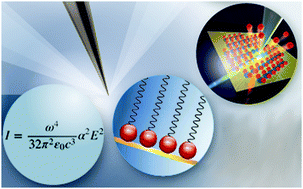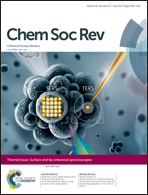Tip-enhanced Raman spectroscopy – from early developments to recent advances
Abstract
An analytical technique operating at the nanoscale must be flexible regarding variable experimental conditions while ideally also being highly specific, extremely sensitive, and spatially confined. In this respect, tip-enhanced Raman scattering (TERS) has been demonstrated to be ideally suited to, e.g., elucidating chemical reaction mechanisms, determining the distribution of components and identifying and localizing specific molecular structures at the nanometre scale. TERS combines the specificity of Raman spectroscopy with the high spatial resolution of scanning probe microscopies by utilizing plasmonic nanostructures to confine the incident electromagnetic field and increase it by many orders of magnitude. Consequently, molecular structure information in the optical near field that is inaccessible to other optical microscopy methods can be obtained. In this general review, the development of this still-young technique, from early experiments to recent achievements concerning inorganic, organic, and biological materials, is addressed. Accordingly, the technical developments necessary for stable and reliable AFM- and STM-based TERS experiments, together with the specific properties of the instruments under different conditions, are reviewed. The review also highlights selected experiments illustrating the capabilities of this emerging technique, the number of users of which has steadily increased since its inception in 2000. Finally, an assessment of the frontiers and new concepts of TERS, which aim towards rendering it a general and widely applicable technique that combines the highest possible lateral resolution and extreme sensitivity, is provided.

- This article is part of the themed collection: Surface and tip enhanced spectroscopies


 Please wait while we load your content...
Please wait while we load your content...